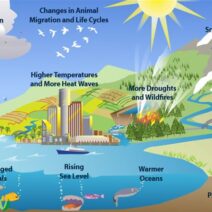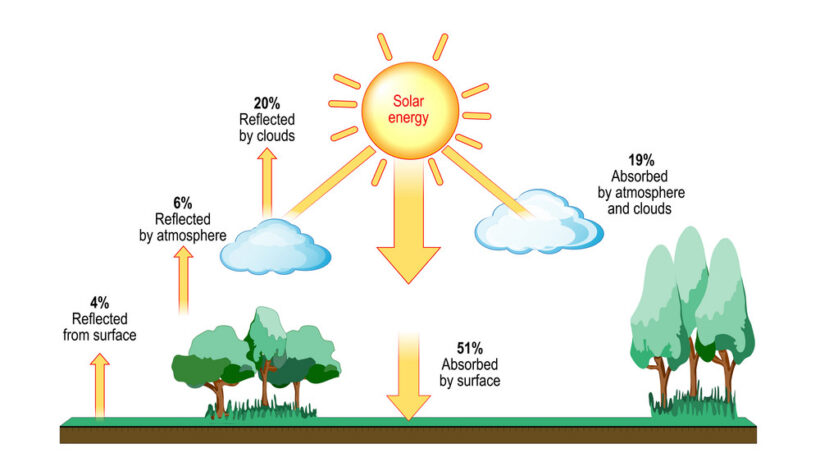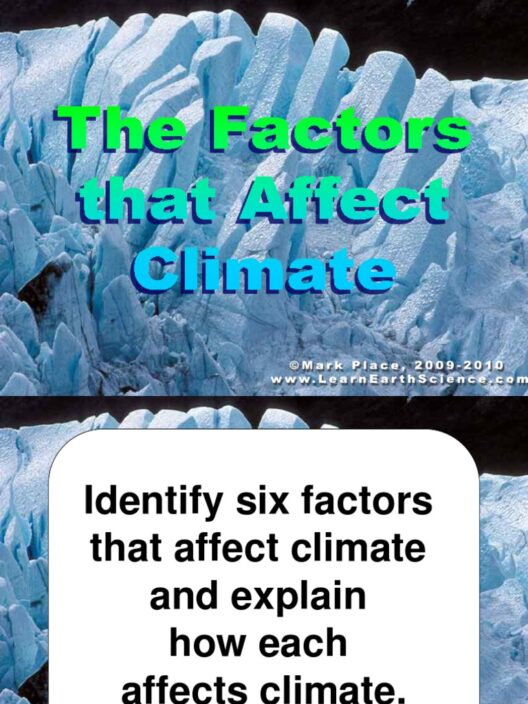Solar radiation is an omnipresent force, subtly sculpting the contours of Earth’s climate. Have you ever pondered how the sun that brightens your day also plays a pivotal role in the ecosystems that thrive around us? This seemingly straightforward question unveils a multitude of complexities in terrestrial interactions, forming the crux of myriad challenges we face in the context of climate change. The impact of solar radiation is profound, shaping not only weather patterns but also influencing biological systems, water resources, and the very fabric of our atmosphere.
First, it is essential to comprehend the fundamentals. Solar radiation, a byproduct of nuclear fusion within the sun, travels approximately 93 million miles through the vacuum of space before reaching Earth. This radiation is mitigated by the atmosphere, which acts as a protective blanket. Approximately 30% of it is reflected back into space, while the remainder is absorbed or scattered, playing a critical role in atmospheric dynamics and climate regulation.
The absorption of solar radiation results in the heating of the Earth’s surface, a process that governs various climate phenomena. Variability in solar radiation due to factors such as Earth’s axial tilt and orbital eccentricities leads to seasonal changes, affecting everything from vegetation cycles to animal behavior. The distribution of solar energy is uneven, creating temperature gradients that drive atmospheric circulation. This circulation, in turn, influences weather systems, creating familiar patterns of tropical storms, monsoons, and arid regions.
Yet, solar radiation is not dispensed evenly. Regions near the equator receive more direct sunlight year-round compared to the polar areas. This discrepancy leads to a transfer of energy from equatorial regions toward the poles, a vital mechanism that contributes to global wind patterns and ocean currents. The Gulf Stream, for example, is a result of solar energy variations, and it brings warm water from the tropics to the North Atlantic, moderating climates in Northern Europe and beyond.
But what happens when the balance of incoming solar radiation and outgoing heat is disrupted? This brings us to a critical concern: anthropogenic climate change. Human activities, particularly the extensive burning of fossil fuels, have increased the concentration of greenhouse gases in the atmosphere. These gases trap heat, further complicating the natural energy budget and exacerbating the effects of solar radiation. The result is a phenomenon known as global warming, which has far-reaching implications, from rising sea levels to shifting agricultural zones.
Now, let’s consider the local impact of solar radiation on ecosystems. Forests, grasslands, and wetlands all respond dynamically to varying levels of sunlight. Plants utilize photosynthesis to convert solar energy into chemical energy, forming the foundation of most food webs. However, changes in climate can lead to mismatches in the timing of flowering and pollinator activity or alter habitats entirely. For instance, as regions warm, we may see certain species migrating northward, while others face extinction due to their inability to adapt to changing solar conditions.
Interestingly, solar radiation also impacts water resources. Snowmelt, driven by solar heating, is crucial for many ecosystems and their corresponding life cycles. If temperatures rise and snowpack decreases, water availability will dwindle, impacting agriculture, drinking water supplies, and entire populations reliant on consistent water flows. The interplay between solar energy and hydrological cycles is intricate and demands careful attention, particularly in the context of climate resilience.
What are the implications of our current trajectory? If we continue to disregard the implications of increased solar absorption due to climate change, we may face catastrophic challenges. For instance, we could witness more intense and frequent storms, altered precipitation patterns, and prolonged droughts. These issues pose significant threats not only to biodiversity but also to human livelihoods across the planet.
Emerging technologies offer both hope and uncertainty in relation to solar radiation management (SRM). Techniques such as solar geoengineering aim to reflect sunlight away from Earth to counteract global warming. However, these approaches come with moral and ethical dilemmas, as they could inadvertently modify weather patterns, leading to unforeseen consequences. Would deploying such technologies provide a viable path forward, or would it merely delay the inevitable challenges wrought by a warming planet?
In contemplating the relationship between solar radiation and climate, it is imperative to recognize the interconnectedness of our actions. As global citizens, we hold the responsibility to advocate for sustainable practices that minimize our carbon footprint and enhance resilience. Reducing reliance on fossil fuels, promoting renewable energy sources, and fostering biodiversity are vital steps toward mitigating climate impacts.
In conclusion, solar radiation is not merely a force that warms our planet; it is a fundamental driver of Earth’s climate, intricately linked to ecological balances and societal functioning. As we engage with this radiating energy, let us also ponder how we can shape a sustainable future that honors the delicate relationships within our environment. The challenge lies in our hands: to appreciate the radiating change that solar energy brings and to take decisive action to ensure the health of our planet for generations to come.








